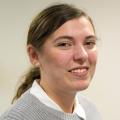YOUNGSTERS from two schools were invited to view a medieval road uncovered during a survey for a new housing development.
Children from both St Paul’s C of E Junior School and Dane Ghyll Community Primary School attended the site near Furness General Hospital being built on by Oakmere Homes.
Marie, a school administrator and teaching assistant at St Paul’s said: “The children really enjoyed themselves.
“They were really fascinated by the artifacts discovered at the site.
“A man from Oakmere Homes explained to the children that they were in the process of building houses which is how they came across the discoveries.
“I think that children really live in the moment so they were fascinated by seeing the history coming to life.
Headteacher at Dane Ghyll, Peter Mills said: “The children were really interested and it made them realise that being an archaeologist is a real job that they would have never considered.
“The children found it really interesting to bring history alive. It was such a fantastic opportunity to have right on our doorstep.
“Visiting the site has made us think about what could be under our school grands and we are going to do some research into the history of it”.
Alex Hartley, an archaeologist who works for the Northern Archaeological Association in County Durham, met with the children.
He said: “We believe that the road we have found is medieval and around 4000 to 5000 years old.
“Any artifacts we find get sent for processing and analyses.
“The specialist will be able to give us a better idea of how old it is, and can start to think about who put it there and why.
“The kids seemed to really enjoy it especially when they got to handle the pottery."
The discoveries are not thought to cause any disruption to the housing development.
Mr Hartley said: “Without the development the remains wouldn’t have been discovered.
“We will be here for the next week, if we find remains of a higher significance then more work will need to happen but it will not stop the development."
It is hoped that the artifacts will make their way back to Barrow after being analysed and kept at The Dock Museum.










Comments: Our rules
We want our comments to be a lively and valuable part of our community - a place where readers can debate and engage with the most important local issues. The ability to comment on our stories is a privilege, not a right, however, and that privilege may be withdrawn if it is abused or misused.
Please report any comments that break our rules.
Read the rules hereLast Updated:
Report this comment Cancel